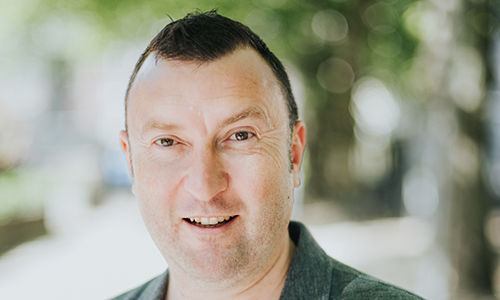
Jon Gordon brings forward the concept of leaders needing both a telescope and a microscope to create and share a positive vision in his book The Power of Positive Leadership. This interesting analogy invites further exploration.
A telescope is needed to look far into the future, way beyond short-term. This is the domain of strategic thinking, foresight and understanding of how the world will change, a place where leaders can dare to dream and imagine what their organisation will be in a better future. This is where leaders scan for both threats and opportunities to be able to navigate in a safe and stable way, but also in an exciting and brave way.
The microscope, on the other hand, is needed to observe and understand the organisation and each and every individual in it on a simple, everyday level. The microscope enables the leader to address and develop everyday behaviour, interaction and action that constitutes the small but utterly needed steps that will make us not only dream but reach for the stars!
Challenges ahead
There are a few challenges, one is that leaders often tend to use mostly one instrument, or even worse, if leaders only have one instrument available to them. Many of us have experienced a leader known as a dreamer – someone armed with only a telescope, who is gazing at the stars, envisioning and passionately encouraging others to dream as well. The problem? In the absence of a microscope, there is little knowledge and interest in designing a coherent, systemic and step-by-step pragmatic way to reach that vision. This will risk leaving the team bitter and disillusioned, sometimes even cynical about its leaders, and their ability to do anything more than dream and come up with bombastic ideas for the future.
It can be equally displeasing to witness leaders armed with only a microscope. They surround themselves with the everyday activities and are so fully aware of each small nut and bolt that constitutes the company's mechanisms and the way they work. At best, they are always available ready to participate and pitch in. At worst, they micromanage everything and everybody since they might be afraid to lose control.
In both of these cases, the largest challenge of all is the same, where are we going? What is the vision? The direction? The ambition?
Another factor to consider, is that even when leaders are equipped with both the telescope and the microscope, many fail to properly communicate what they envisage. How is the vision understood and interpreted by the leadership team in the company? What is the vision built upon and why is it that way? Everybody wants and needs to know. Even if a leader can see a vision clearly, it does not mean that others also see it, or understand it the same way or even believe it! The same goes for the microscope, when daily shortcomings of us as individuals, teams and as an organisation are visible but not discussed and addressed by leadership. This sometimes happens due to to fear of confrontation or because of tolerance of mediocre performance. This means that the leader has a microscope but does not use the findings obtained with it to help the people and the organisation.
How do we rank?
To conclude, let's explore how we rank ourselves. The more points you agree with in the list below, the closer you are to an ideal leader armed with both a telescope and a microscope and know how to use them.
- Me and my team regularly come together to think about the future and elaborate on how it will change our business landscape, to try and formulate central future scenarios for our organisation.
- Me and my team regularly revisit our vision and consider if it is inspiring enough, ambitious enough, clear and forward looking enough.
- Me and my team do our best to explain and inspire others, by sharing our common dream and vision as a company and answering the key question - why it is the way it is?
- I understand that the road to any ambitious goal is built by small steps that need to be planned and coordinated within the organisation.
- I am good at being a system architect: I thoroughly plan, organise and build the strategy and the steps that will effectively bring us closer to reaching our ambitious vision.
- I use my emotional intelligence to read individual's and team's emotions (fears, aspirations, passions, pride etc.) and consequently build top performance by addressing these emotions, strengths and weaknesses.
This is not an exhaustive list but enough to make us think about where we are on our journey to becoming the leader, who can use both the telescope and microscope approach in a balanced way.
Does your organisation need support in staying on track to reach your vision? We arrange workshops to help companies and their leaders perform better towards their company goals, contact us to find out more.


